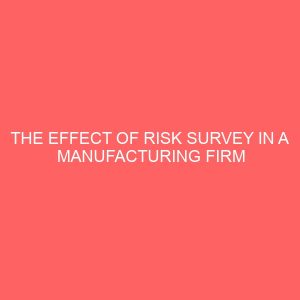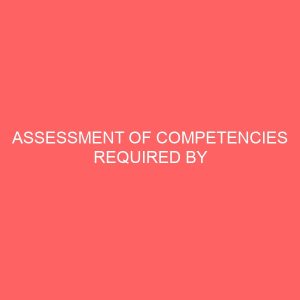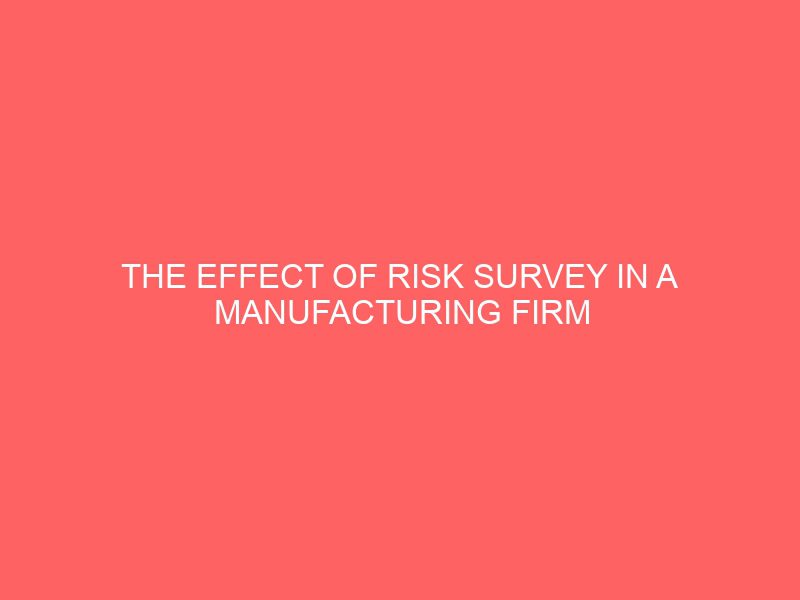Description
ABSTRACT
The effect of risk survey in a manufacturing firm (a case of emenite Plc). Is over emphasized. Risk is the center of human activities and a manufacturing firm like Emenite will need the activities of risk management to survey. So it is only when there is adequate risk survey that the risk manager will be able to identify various risk exposure. Using organizational charts, Hazard and operational studies, check list and so on. When this happens, they will evaluate the identified risk so as to recommend appropriate risk management principle for risk handling. The chapter one of this project started with introduction historical background, statement of problem, purposes of study, significance of study. In chapter two it looked into the literature review of past materials concerning this topic. Chapter three is about the source of data, population, sample size, validity and reliability of instrument. Finally chapter four discussed about the summary of findings and discussion were it was found that risk survey will help to identify these risk that are insurable. Chapter five which looked into conclusion and recommendation therefore recommended to ensure that there is adequate law that will guide local insurer and insure for effectiveness in provement in local initiative.
TABLE OF CONTENTS
Title page i
Approval page ii
Dedication iii
Acknowledgement iv
Abstract vii
Table of content viii
CHAPTER ONE
1.0 Introduction 1
1.1 Background of the study 1
1.2 Statement of problems 4
1.3 Objective of the study 5
1.4 Research questions 6
1.5 Significance of the study 7
1.6 Scope and limitation of the study 8
1.7 Definition of operational terms 9
Reference 12
CHAPTER TWO
2.0 Review of Related literature 13
2.1 An overview 13
2.2 Definition of risk 14
2.3 Categories of risk 15
2.4 Concept of risk survey 17
2.5 The reasons why we survey identify, control and Transfer rise 18
2.6 Various risk exposed 19
2.7 Duties of A risk survey in a manufacturing firm 22
2.8 Benefit of risk survey 23
Reference 24
CHAPTER THREE
3.0 Research Methodology and Design 25
3.1 An Overview 25
3.2 Source of data 25
3.3 Instrument used for this study 26
3.4 Population of the study 26
3.5 Sample size and sampling techniques 27
3.6 Validity of the instrument 28
3.7 Reliability of the instrument 29
CHAPTER FOUR
4.0 summary of findings and discussion 30
4.1 Summary of findings 30
4.2 Discussion of findings 31
CHAPTER FIVE
5.0 Conclusion and Recommendation 34
5.1 Conclusion 34
5.2 Recommendation 36
5.3 Suggestion for further studies 37
Bibliography 38
Appendix 39







